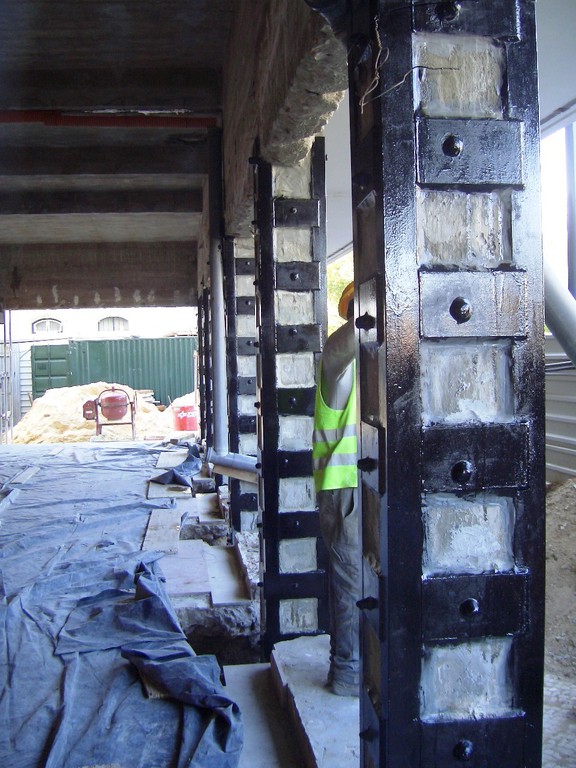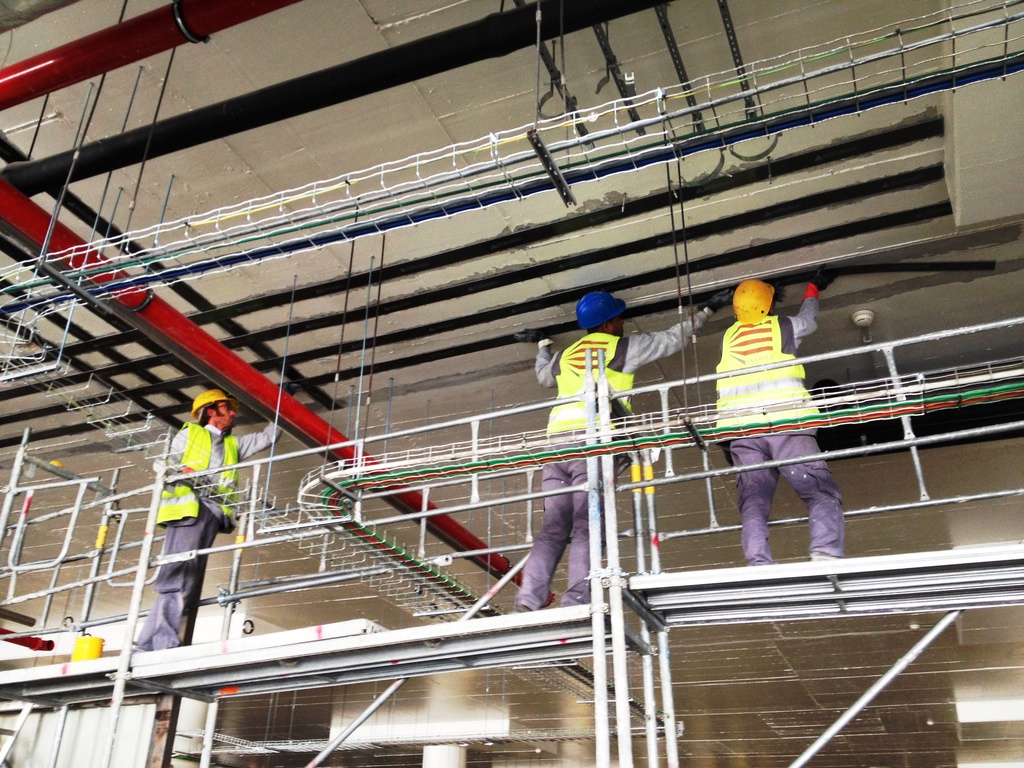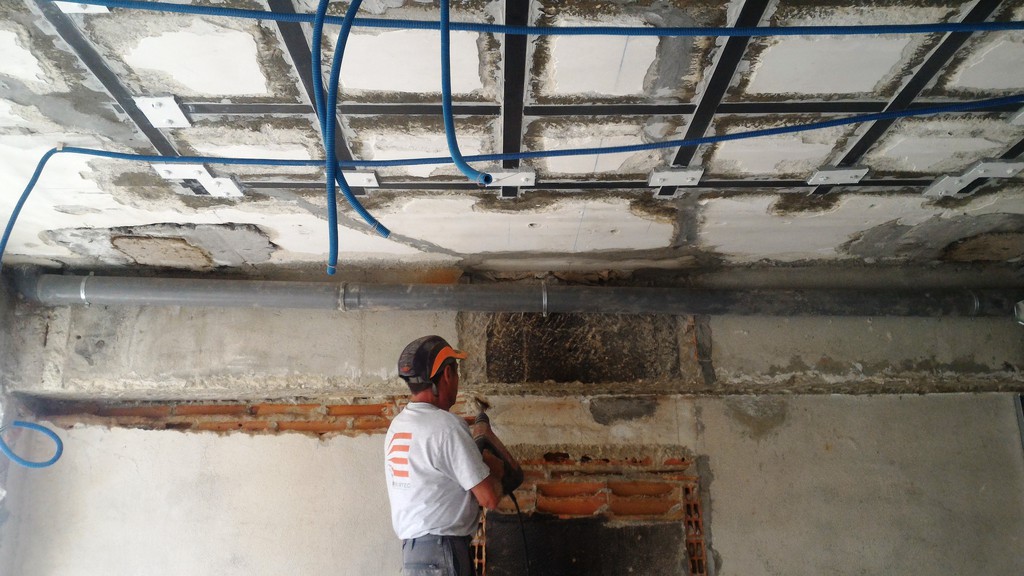Repair and reinforcement of structures
Structure is the section of the building aiming at resisting actions/forces to which the latter is subjected throughout its lifespan.
For the building to be safe, the resistant capacity of its structure shall be higher than the whole range of actions affecting it, namely of permanent character (the construction's weight itself), variable loads (overloads in accordance with the type of purpose, wind, earthquakes, temperature variations, snow) and accidental loads (explosions, clashes, fires), with a loose safety margin, as established by law.
In structures, the main problems are:
For the building to be safe, the resistant capacity of its structure shall be higher than the whole range of actions affecting it, namely of permanent character (the construction's weight itself), variable loads (overloads in accordance with the type of purpose, wind, earthquakes, temperature variations, snow) and accidental loads (explosions, clashes, fires), with a loose safety margin, as established by law.
In structures, the main problems are:
. Design/project defects;
. Bad workmanship;
. Poorly designed structural modifications;
. Aging/deterioration.
Up until recently, the widespread public opinion was that concrete structures would endure forever.
Nowadays we know that it is not true. It is common to find concrete structures showing signs of deterioration, requiring repairing and renovation. Elements directly exposed, e.g. in façades, are a frequent focus of maintenance problems, resulting from the reinforcements’ quick corrosion.
In wood and metal structures, the main element lastingness is mainly depending on the precautions taken in its design and construction. First, they need to be protected against humidity, which on its hand results in rottenness and infestation by wood-eating insects (wood), as well as corrosion and a reduction of area (metals).
Reinforced concrete repairing
The main problem connected with the deterioration of reinforced concrete is the corrosion of its steel reinforcements, mainly resulting from:
. Concrete carbonation (concrete chemical alteration due to carbon dioxide action in the atmosphere);
. Contamination by chlorides (action in environments in the outreach of coastal zones and maritime structures);
. Mechanical actions (impacts and wounding on concrete surface).
Repairing of reinforced concrete elements implicate removing the coating material layer from the reinforcement in deteriorated areas, removing corrosion on exposed steel rods, applying supporting reinforcement in the event of significant reduction in steel sections, applying corrosion inhibitors in reinforcements, applying high mechanical resistance, high substrate adherence and retraction-free pre-mixed repairing mortars.
Ribertec offers high experience in this type of works and is well-stocked with human resources and equipment to carry out this type of works.
Strengthening with steel plates and profiles
It is possible to increase resistance by introducing several steel parts into the structural elements’ surfaces. Steel plates and profiles are set out through a specific strengthening project. It is possible to connect the strengthening material by sticking it with epoxy resins and metal connectors, following prior contact surface preparation.
These are notably used when strengthening existing reinforced concrete beams and columns.
Strengthening wuth carbon fibre (CRFP)
It is possible to increase resistance by adding various epoxy plastic elements reinforced with carbon fibres (blankets and plates). The number of elements and corresponding sections are set out through a specific strengthening project. It is possible to connect the strengthening material by using epoxy-based adhesives, following prior contact surface preparation.
These are notably used when strengthening existing reinforced concrete beams and slabs.
Repairing of reinforced concrete elements implicate removing the coating material layer from the reinforcement in deteriorated areas, removing corrosion on exposed steel rods, applying supporting reinforcement in the event of significant reduction in steel sections, applying corrosion inhibitors in reinforcements, applying high mechanical resistance, high substrate adherence and retraction-free pre-mixed repairing mortars.
Ribertec offers high experience in this type of works and is well-stocked with human resources and equipment to carry out this type of works.
Strengthening with steel plates and profiles
It is possible to increase resistance by introducing several steel parts into the structural elements’ surfaces. Steel plates and profiles are set out through a specific strengthening project. It is possible to connect the strengthening material by sticking it with epoxy resins and metal connectors, following prior contact surface preparation.
These are notably used when strengthening existing reinforced concrete beams and columns.
Strengthening wuth carbon fibre (CRFP)
It is possible to increase resistance by adding various epoxy plastic elements reinforced with carbon fibres (blankets and plates). The number of elements and corresponding sections are set out through a specific strengthening project. It is possible to connect the strengthening material by using epoxy-based adhesives, following prior contact surface preparation.
These are notably used when strengthening existing reinforced concrete beams and slabs.
|
|
 |
 |
